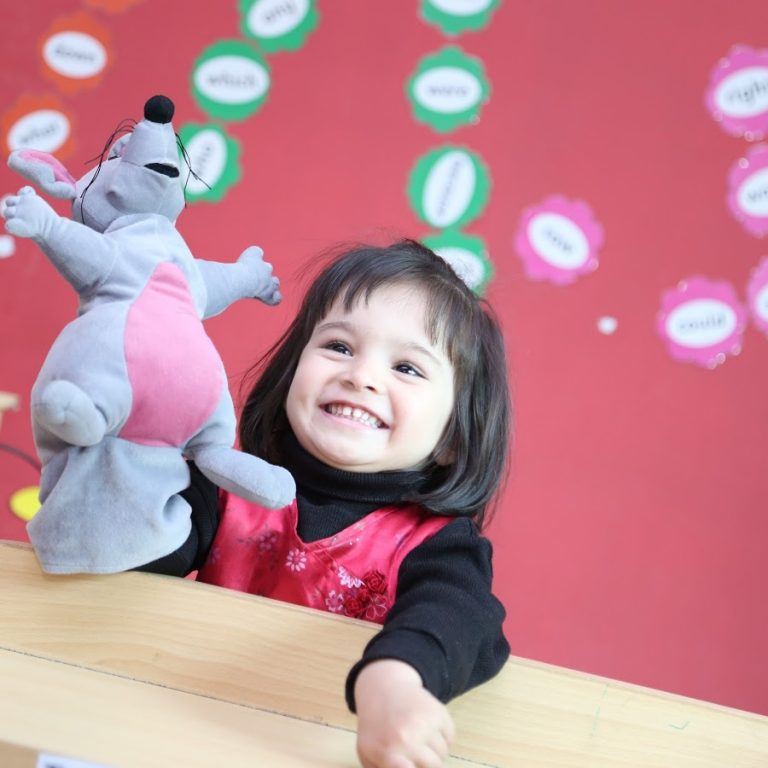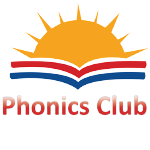Jolly Phonics is a structured way of teaching communication skills. It leads through the natural progression of listening, as a young baby, through to speaking and eventually reading and writing. Jolly Phonics focuses on teaching letter sounds in an exciting and fun way.
Frequently Asked Questions
The phonological processor usually works unconsciously when we listen and speak. It is designed to extract the meaning of what is said, not to notice the speech sounds in the words. It is designed to do its job automatically in the service of efficient communication. But reading and spelling require a level of meta-linguistic speech that is not natural or easily acquired. Phonological awareness is critical for learning to read any alphabetic writing system. And research shows that difficulty with phoneme awareness and other phonological skills is a predictor of poor reading and spelling development.
It is necessary to teach phonics systematically, using a structured program. A systematic phonics approach or program is that a sequential set of phonics elements is delineated and these elements are taught along a dimension of explicitness depending on the type of phonics method employed.
There are many reasons behind this question:
- It is a solution to all those problems faced by teachers, children, parents and curriculum planners. Its flexibility, range of resources and multisensory approach made it successful. However it’s important to choose age appropriate materials while designing a school setup .It is important to use this program as a whole to achieve excellent results.
- Jolly phonics is equally good for schools and homeschooling, children with low socio economic back grounds and from high profile families, for boys and girls, for native and bilingual and even trilingual students, for children with average performance and children with special needs.
- Continues to revise and extend children’s phonic knowledge.
- Flexible and easy to implement in any setup.
- Developed by 2 classroom teachers through experiments and research.
It is important to use it as a whole to get desired results. A blend of programs will lead to confusion and stress on teachers and children.
After the first three sounds have been taught. After learning `s’, `a’ and `t’, students can now make the words `at’ and `sat’. As new sounds are taught you can build up the number of words to blend
No. All you really need is the `Phonics Handbook’, we can supply you with this resource. It contains everything you need to get you started including work sheets, flash cards and word boxes. Jolly Phonics has a really nice range of resources.
The recommendation in Jolly Phonics is that teachers should avoid introducing letter names until after the first few weeks of teaching letter sounds. This advice was recommended after teachers noticed that some children said the letter names whilst trying to blend a word and consequently failed to read the word. This problem only occurred when the letter names and letter sounds were taught at the same time.
So that we don’t confuse children; the sounds the letters make are most important. After the first three sets of sounds have been introduced you can begin to introduce letter names.
Children need to know both letter sounds and their names. The way I introduce letter names is by putting up an alphabet frieze that shows both upper and lower case letters. We sing the alphabet song using the letter names and again, using the letter sounds. I also use upper and lower case flash cards and teach them that although each letter is shown as a capital. It still makes the same sound as the lower case letter. Continue teaching a new sound every day and as you teach a new alphabet letter, teach the name by pointing it out on the alphabet frieze.
The simple answer to this question is no. The children develop phonemic awareness extremely well when they are taught synthetic phonics.
During the first weeks we are focused on teaching children to break the “code” associated with reading (boys love it when you talk about “code breaking”). In the first eight to ten weeks we teach letter sounds, blending technique and the segmentation of words. We also teach irregular words that we refer to as “tricky”.
Some teachers and parents find it hard not to give out reading books because this is a normal expectation in our culture. Unfortunately this does little for the child if they are unable to “break the code” of reading. By delaying this process and concentrating on letter sounds, blending and segmenting techniques, we actually produce higher reading abilities in a shorter time frame.
Once children understand how the code works, they gain in confidence and enjoy reading as an activity so much more.
No. Jolly Phonics is a fast paced program where a new sound is introduced each day along with repetition of identified sounds until they are recognized automatically. I use flash cards extensively in this process. On the third day of the program, we use the first three sounds (s, a, t,), to form two and three letter words by “blending” them. As a new sound is introduced each day, the list of words we can make grows exponentially. By the time you have taught the first three sets of sounds, it is possible to make over seven hundred words from them!
At school each child has a “sound book”, that the teacher or classroom helper reviews with them each day. Each evening, the sound book is sent home for the child and parent to review. These reviews never take up more than a few minutes.
The timing and pace associated with children learning new skills is a very individualistic thing. I have had children as young as yours show a readiness for reading; they have liked to sit with me and explore what’s on the page of a book. In this setting, I start by pointing to a letter and emphasizing the sound it makes as we read (the Jolly Phonics letter groupings are my guide in this process; starting with s, a, t, etc). Most two-and-a-half year olds are more interested in picture books so it’s important to read lots of these books and then to ask questions like, “Where is the dog?” or, “show me the house”. As you read, put your finger underneath each word and move left to right across the page. The “I Spy” game is also helpful here. Say things like, “I spy a cat”, and the child finds the cat and so on.
As you progress, you can increase your child’s listening skills by sounding out little words, for example, “Where is the m-a-n?” or, “Find the d-o-g”. Young children need lots of activities to “tune-in”, their ears so they learn to differentiate different sounds. Preschool and day-care teachers use finger rhymes, songs, and musical instruments to help children listen. You can also do these activities at home.
Tricky words should be introduced after the fourth set of sounds. It is recommended that you teach two tricky words each week from that point. Don’t rely on `look-and-say’, ask children, “What is tricky about this word?” Their response will often surprise you.
You should be teaching a new sound each day. Every day you must repeat the sounds until the children know them to automatically.
You should teach two sounds per day. Ask parents to go over the sounds that you have taught on the days that they are not at school. I find parents are often willing to help in this regard.
Jolly Phonics provide a structured program. After working through the Phonics Handbook, you follow-up with Jolly Grammar 1 which is often used in Grade 1. Jolly Grammar 2 follows for Grade 2 students. The Grammar Handbooks cover all of the basic grammar skills including parts of speech, spelling, punctuation, compound words, regular/irregular past tense and prefixes and suffixes.
Children do not just learn the 26 letters of the English alphabet. They learn the 42 main sounds used in the English language. It is taught through a variety of multi-sensory and fun activities. We begin by telling a short story which leads into the sound and connected action. For example, ‘S’ is a snake in the grass. Even if adults find all the actions and sounds difficult to remember but you can guarantee the children will never forget!
You can start JP from age 2.Jolly Phonics system can be used with kindergarten students till primary school.
Jolly Phonics can be used from age2 children, in Pre- K classes and complete in Kindergarten 3 class or later in primary school and continue with Jolly Grammar
Playgroup classes begin with singing songs, sounds and actions. They also begin to color in sound sheets, trace letters using cards or Finger Phonic Books and begins with prewriting skills.
In almost every other school, however some schools are using it in parts and some are using it as a whole program.
One can use Jolly phonics very effectively in schools and homes by using true Jolly Phonics approach or Jolly ways of teaching as mentioned in the handbooks. Use of age appropriate resources is a must for its implementation and usage.

SEND NEW QUESTION
